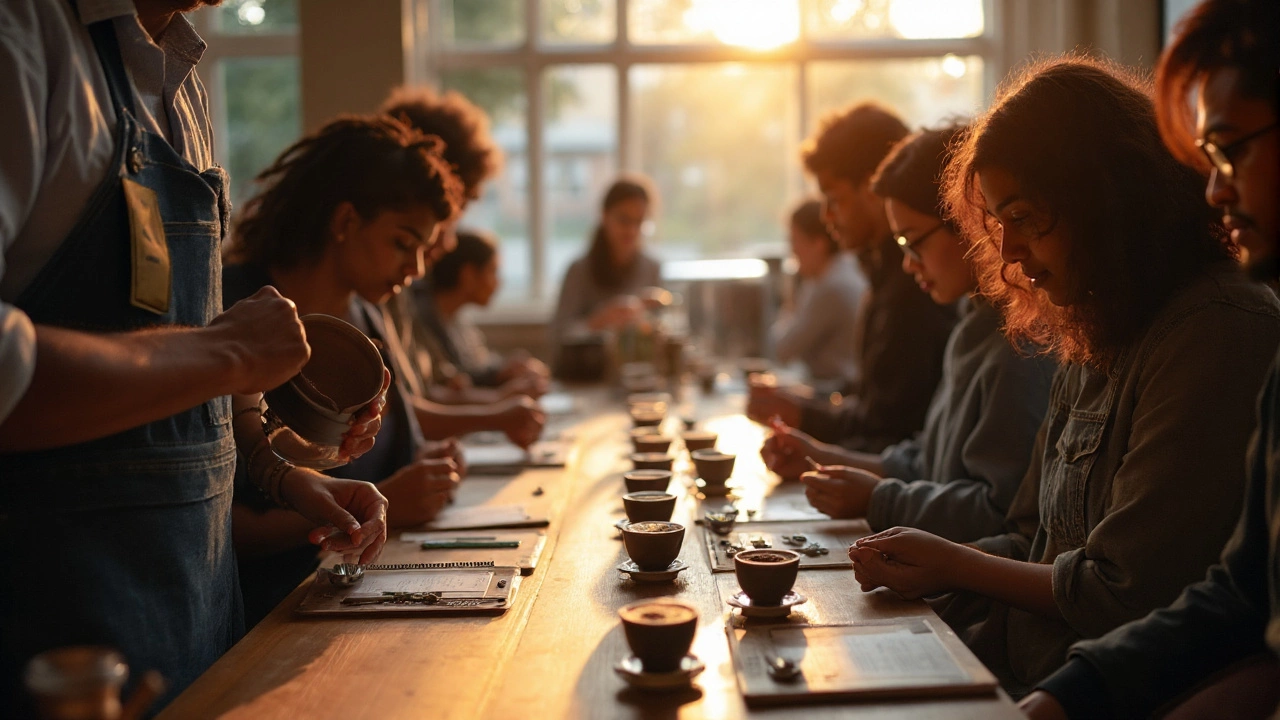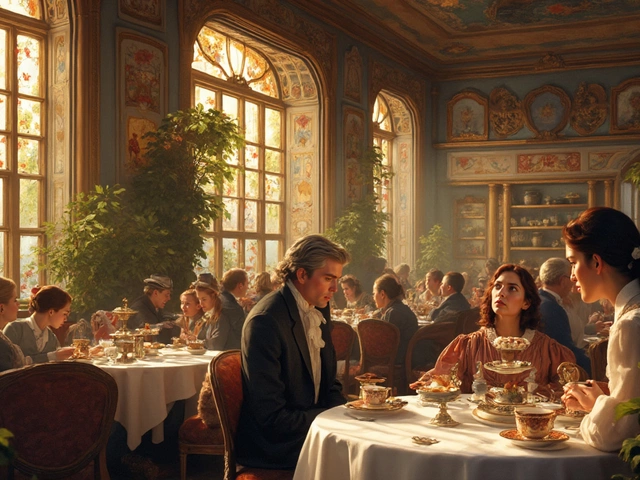Coffee Tastings: Your Simple Guide to Better Brews
If you love coffee, you’ve probably tried a few cups and thought, ‘What makes one brew better than another?’ The answer often lies in a tasting session, or cupping. It’s not just for pros – anyone can learn the basics and start noticing new flavors.
How to Set Up a Coffee Tasting at Home
First, gather a few easy items: a scale, a timer, a grinder, a set of small cups (or even espresso shot glasses), and hot water that’s just off the boil. Measure 12‑15 grams of coffee per cup and grind it medium‑fine – think consistency like table salt. Pour hot water at about 200°F (93°C) and let it bloom for 30 seconds, then fill the cup to the desired level.
While the coffee steeps, give it a good sniff. A lot of flavor clues come from the aroma, so take a deep breath and try to pick out notes like chocolate, citrus, or nuts. When you’re ready, stir the coffee gently with a spoon and take a small sip. Let the liquid sit on your tongue, notice the body, acidity, sweetness, and any lingering after‑taste.
Key Things to Notice When You Taste
Start with the body – does the coffee feel light like water or thick like a milkshake? Next, check the acidity. Good acidity is bright, not sour; think of a crisp apple or a splash of lemon. Then look for sweetness. Even bitter beans can have a natural sugar feel, reminiscent of caramel or honey.
Finally, note the after‑taste. Does the flavor fade quickly or linger with a pleasant finish? Write down what you hear and feel; a quick notebook or phone note works fine. Over time you’ll spot patterns – maybe you prefer beans from Ethiopia for their fruity zing, or you like a smooth Colombian blend for its nutty roundness.
Don’t forget the water quality. Hard water can mask subtle flavors, so filtered or bottled water often gives a cleaner cup. Also, the temperature matters – too hot and you’ll burn the beans, too cool and the coffee stays flat.
Once you’re comfortable, try tasting two or three different roasts side by side. Compare a light roast to a dark one, or a single‑origin bean to a blend. This contrast sharpens your palate and makes each cup more interesting.
Remember, coffee tasting isn’t about being perfect – it’s about having fun and learning what you enjoy. Keep the session short, about 20‑30 minutes, and make a habit of it once a week. Soon you’ll start ordering coffee at cafés with confidence, and you might even start a tiny tasting club with friends.
So grab your grinder, measure that coffee, and give your senses a workout. You’ll be surprised how much more you can taste when you take a moment to really listen to your cup.
Yes-coffee tastings are real. Here’s what they are, how they work, where to find them, and how to run a cupping at home with pro tips, costs, and etiquette.
View Details

